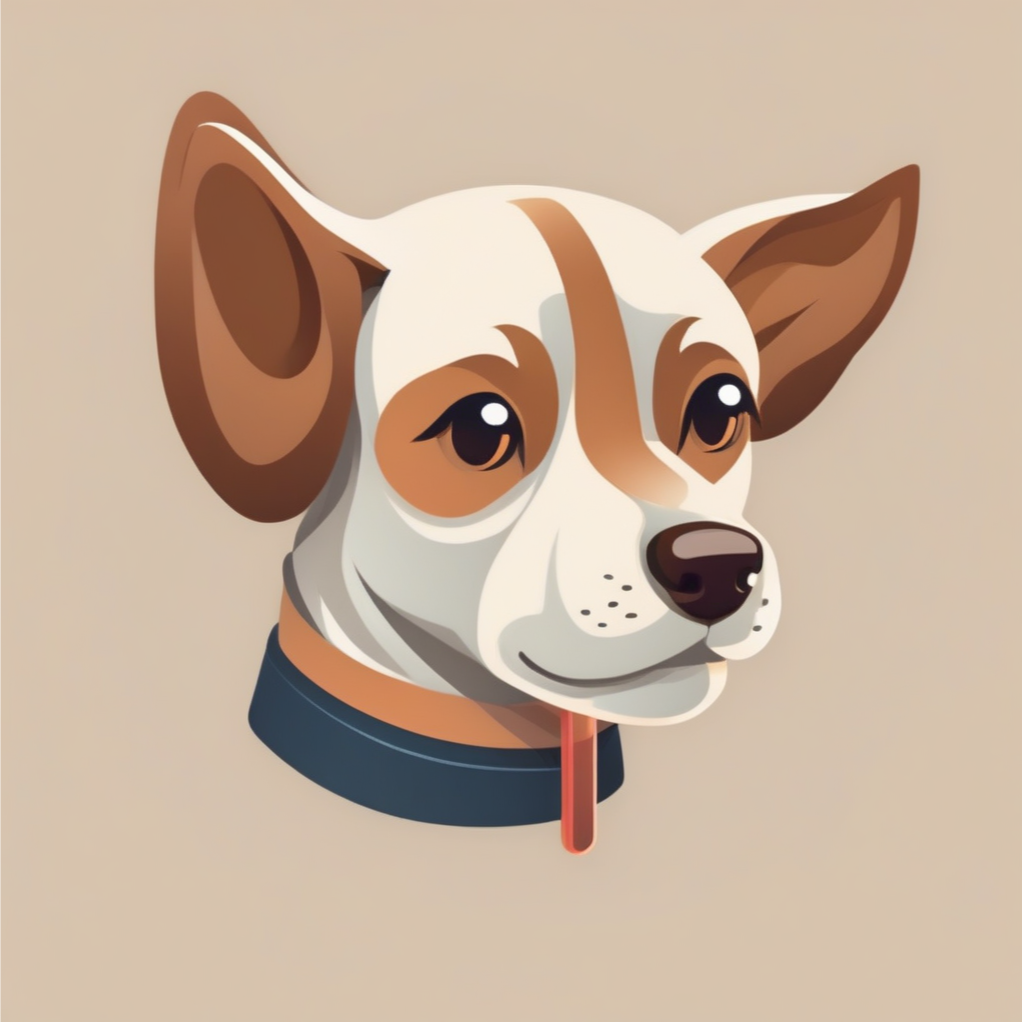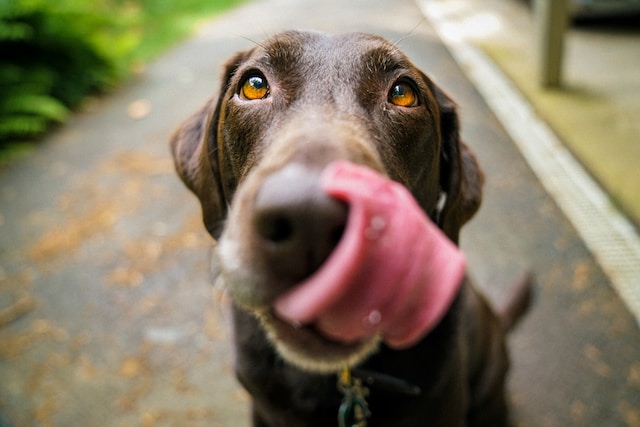Loyalty is a treasured quality in dogs, but have you ever noticed that your canine companion seems to be overly fixated on you? If your beloved furry friend faithfully sticks to your side and becomes distressed when you’re not around, you might be dealing with what’s commonly referred to as “clingy dog behavior.”
Clingy dogs can be found among various breeds, so it’s not limited to specific types. While your dog’s attachment can be heartwarming, it can also become overwhelming and raise concerns for pet owners. To help you better understand why your pup is displaying such clingy behavior and how to address it, let’s explore some of the typical causes of clingy dog behavior.
Caring for your dog, including their nutrition, plays a pivotal role in their overall well-being. Dogs can become clingy for various reasons. One common cause is anxiety, which can manifest as clingy behaviors. Additionally, if your dog senses stress or changes in their daily routine or living environment, they may also become clingy. Understanding these triggers can help address your dog’s clinginess while ensuring their proper dog care and nutrition are maintained.
What is a Velcro Dog?
A “velcro dog” is a term used to depict dogs that display an exaggerated level of attachment and clinginess toward their owners. Velcro dogs are typically characterized by their tendency to shadow their owners from one room to another, an aversion to being left alone, and signs of anxiety when separated. Recognizable indicators of velcro dog behavior encompass:
- Excessive vocalization (barking or whining) when left in solitude.
- Persistent demands for attention.
- Consistently following their owners around the house.
- An inability to remain alone in a room without becoming distressed.
- Engaging in behaviors such as pawing, licking, or jumping on their owners.
- Demonstrating jealousy towards other animals or people.
For many dogs that suddenly develop clingy behavior, there is a possibility that they are experiencing separation anxiety, which can be triggered by various factors. To gain a deeper understanding of velcro dog behavior, including its relationship to separation anxiety, potential training approaches, whether being a velcro dog is problematic, and identifying large and small breeds prone to such behavior, let’s explore some of the most pertinent aspects of this phenomenon.
Why do dogs become clingy?
Commonly, dogs develop clingy behavior through a learned association. They pick up this behavior from humans through interactions. For example, if you consistently reward your dog with treats when they follow you into the kitchen or provide affection when they lie next to you, they learn that such actions lead to rewards.
Stress/Anxiety
Stress and anxiety are common catalysts behind signs of a clingy dog or when a dog is extra clingy and whiny. Dogs, much like humans, can experience stress due to various triggers, such as loud noises, changes in their environment, or even traumatic experiences. When left alone, anxious dogs may exhibit clinginess as a coping mechanism to alleviate their anxiety, making them appear more needy and restless. They seek comfort and reassurance from their owners, often following them closely to maintain a sense of security.
Health Issues
Health problems can also contribute to clingy dog behavior. If your dog is unwell or feels vulnerable, they may seek comfort by staying close to you. This behavior serves as a way to communicate their distress, making it essential for pet owners to recognize these signs and attend to their dog’s needs promptly. Dogs are instinctively drawn to the people they trust when they’re feeling unwell, seeking solace and potentially prompting their owners to address their health concerns promptly.
Bad Habits
In some cases, clingy dog behavior can stem from learned habits. Some dogs develop clingy behavior due to certain habits they’ve formed. If a dog has been consistently rewarded for attention-seeking behaviors in the past, they may continue these actions, making the dog extra clingy. For instance, a dog that jumps on its owner to receive affection can develop the habit of doing so persistently. Breaking such habits requires consistent training and redirecting the dog’s behavior towards more acceptable forms of seeking attention.
Inadequate Socialization
Inadequate socialization during puppyhood can lead to clinginess in adult dogs. Proper socialization during a dog’s early stages of development is crucial for ensuring they grow up well-adjusted and confident. Dogs that have not been adequately socialized with other dogs, animals, or people may become overly dependent on their owners, resulting in a clingy dog. They rely on their owners for safety and guidance in unfamiliar situations, leading to clingy behavior when faced with new experiences.
FOMO/Curiosity
Dogs are naturally curious creatures, and some may have a fear of missing out (FOMO). They don’t want to be left out of any activities or interactions happening around them, which can result in them constantly following their owners, making them appear more clingy. This behavior is often driven by a desire to be part of the action and can be managed through proper training and enrichment activities.
Boredom or Lack of Stimulation
Dogs may become clingy if they’re not mentally or physically engaged. When they lack sufficient exercise, playtime, or mental challenges, they may resort to clingy behavior as a way to relieve their boredom, contributing to the dog being clingy. Engaging your dog in stimulating activities and providing adequate exercise can help reduce their dependence on your constant presence.
Mating Season
During mating season, dogs may display clingy behavior as a result of hormonal changes, making them appear more needy. Male dogs, in particular, can become more attached to their owners during this time. While this behavior is temporary, it’s essential to ensure your dog’s safety and take appropriate measures to prevent unintended breeding.
Clingy Dog Breeds
Certain dog breeds are known for their affectionate and clingy nature, which is inherent. Breeds like the Vizsla, Golden Retriever, and Labrador Retriever are known for their affectionate and loyal nature, often leading them to be more clingy than other breeds. Understanding the breed-specific tendencies of your dog can help you manage their clinginess more effectively.
Frequently asked questions related to Clingy Dogs:
- Why is my dog constantly clingy to me? Your dog might be constantly clingy due to various reasons such as anxiety, a need for attention, fear of separation, health issues, or learned behavior. Identifying the specific cause can help address the clinginess effectively.
- What dog breed is the most clingy? While clinginess can vary among individuals, some dog breeds known for being more prone to clingy behavior include the Vizsla, Golden Retriever, Labrador Retriever, and Shih Tzu. However, it’s important to note that individual temperament plays a significant role.
- Is my dog too attached to me? A healthy attachment to your dog is normal and desirable. However, if your dog’s attachment leads to behavior problems or excessive distress when separated, it may be necessary to address it through training and socialization.
- Should I let my dog be clingy? It’s important to strike a balance between allowing your dog to express affection and independence. While some degree of clinginess is natural, excessive clinginess can lead to behavioral issues. Encourage your dog’s independence through training and providing mental and physical stimulation while still nurturing your bond.
- Why is my dog being extra clingy? Dogs may be extra clingy due to anxiety, medical issues, emotional needs, life stage, lack of exercise, or separation anxiety. To address this behavior, consult a veterinarian or dog trainer for guidance tailored to your dog’s situation.

